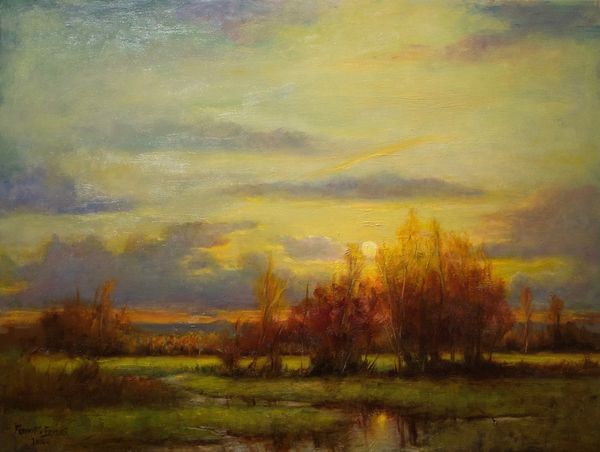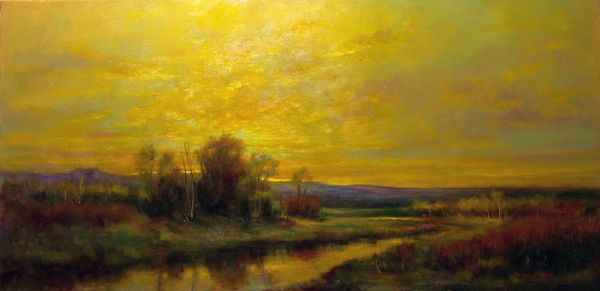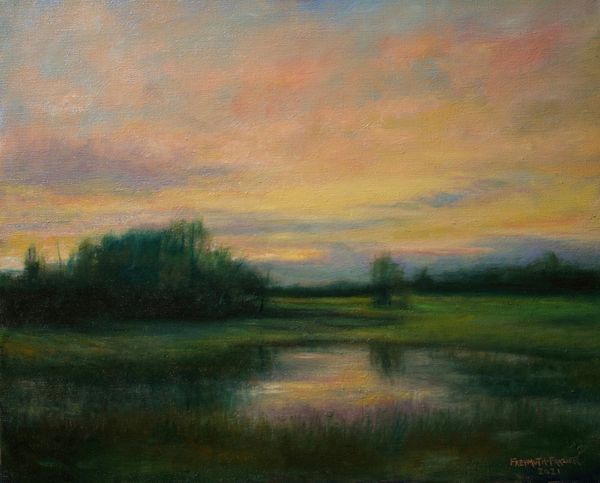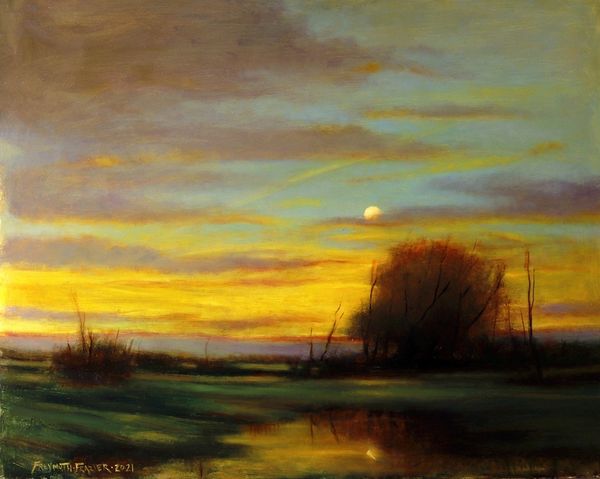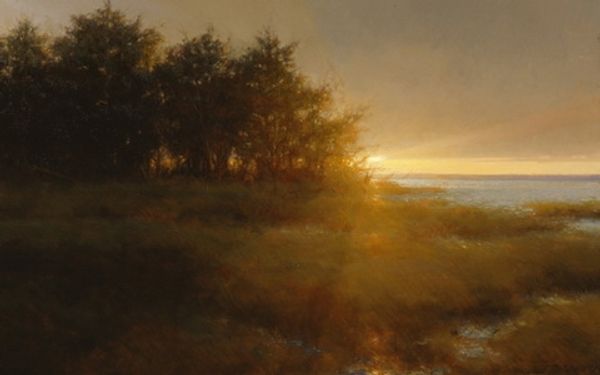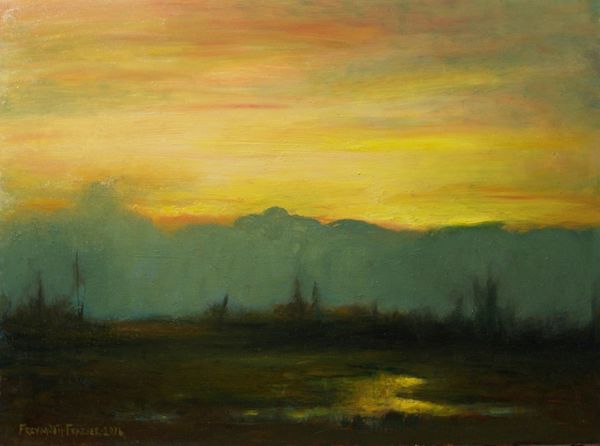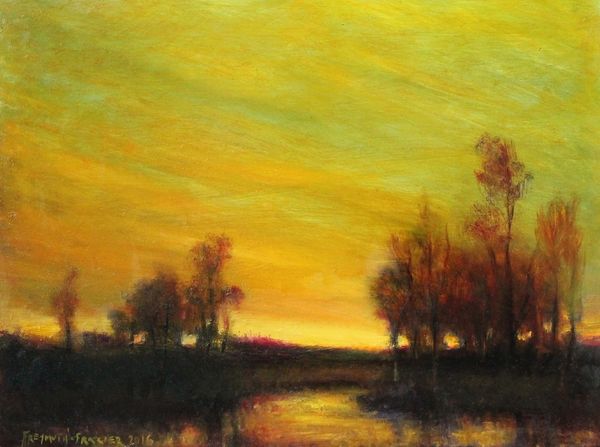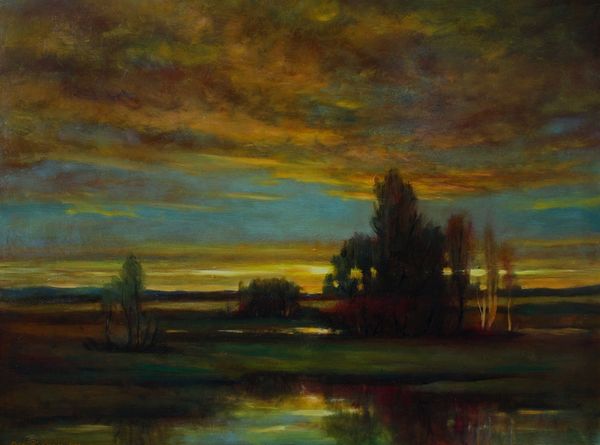
Copyright: Modern Artists: Artvee
Editor: Here we have Rose Freymuth-Frazier's "Violet Haze," an oil painting from 2016. The overall effect is one of serenity; there’s something incredibly peaceful about the hazy atmosphere. How do you interpret this work, considering its style is labeled Romanticism? Curator: Romanticism often looked to nature as a source of sublime power and emotional release, but let's not forget its relationship to ideas of the "picturesque" which was connected to land ownership, social class, and even colonialism. So, the beautiful scene here – what kind of social structures do you think are underlying the image? What ideologies might be influencing the composition and subject matter? Editor: That’s a really interesting perspective I hadn’t considered. I guess I was immediately drawn in by the beautiful sunset and the sense of solitude, but thinking about it, that kind of idealized nature could definitely be tied to power dynamics. Maybe this reflects a desire to escape social realities. Curator: Exactly! Landscape painting often excludes the people actually working the land. What is left out? And to what end? Understanding those exclusions is key. What might a more inclusive approach to representing nature look like? Editor: Perhaps art that actively acknowledges the relationship between humanity and the environment or focuses on communities living in that specific place. This has really changed how I view this piece and how relevant it is. Curator: Precisely. Recognizing art’s potential for social and environmental commentary is paramount. Thanks for opening this critical conversation.
Comments
No comments
Be the first to comment and join the conversation on the ultimate creative platform.

